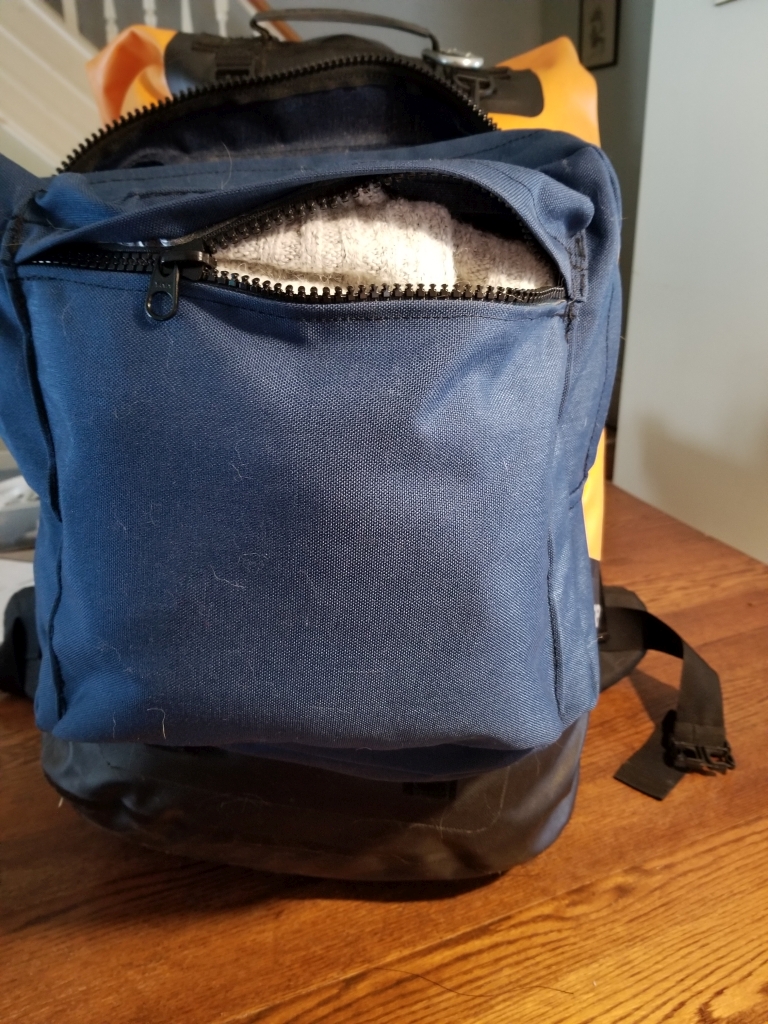Depends on the trip, depends on the canoe. Length of trip usually makes little difference as my gear is essentially the same, about 20-25 lbs before food and water. 3, 5, and 7 days food is roughly 6, 10, and 14 lbs respectively. more food is more bulk and a little more weight.
If it's something with frequent portages, like the St Regis Canoe Wilderness, I go as light as possible and try to single portage it... What I've used previously for that kind of trip is either a GoLite Gust (90 L, longer trip) or Jam70 (70 L, shorter trip), with a dry bag inside. That goes in back. My food bag (a separate/smaller dry bag) would go in front, and can easily be put into the bigger Gust when portaging. If I had the Jam, I'd likely hang the food bag off my front with a couple biners. In a headwind, I'd switch the heaviest bag to the front while paddling.
If it's an easier trip with fewer/shorter portages, I'd take my Chestnut Chum. (I've set it up to sit in the middle, vs reversing it and sitting in the bow seat facing the rear). Here, I'd be very tempted to take a wannagan, regardless of trip length. This holds all my food, Whelen lean-to, and cooking stuff. I'd mostly likely take the GoLite Gust 90L bag with a dry bag inside, just for the extra room to throw gear into without careful packing (the loose stuff you inevitably have floating around your cockpit when it comes time to portage). The wannagan is about 35lbs with a week's food. Point is, one is heavier than the other. How I loaded it would depend on which way the wind was blowing; heavy goes toward the wind.
If it's something with frequent portages, like the St Regis Canoe Wilderness, I go as light as possible and try to single portage it... What I've used previously for that kind of trip is either a GoLite Gust (90 L, longer trip) or Jam70 (70 L, shorter trip), with a dry bag inside. That goes in back. My food bag (a separate/smaller dry bag) would go in front, and can easily be put into the bigger Gust when portaging. If I had the Jam, I'd likely hang the food bag off my front with a couple biners. In a headwind, I'd switch the heaviest bag to the front while paddling.
If it's an easier trip with fewer/shorter portages, I'd take my Chestnut Chum. (I've set it up to sit in the middle, vs reversing it and sitting in the bow seat facing the rear). Here, I'd be very tempted to take a wannagan, regardless of trip length. This holds all my food, Whelen lean-to, and cooking stuff. I'd mostly likely take the GoLite Gust 90L bag with a dry bag inside, just for the extra room to throw gear into without careful packing (the loose stuff you inevitably have floating around your cockpit when it comes time to portage). The wannagan is about 35lbs with a week's food. Point is, one is heavier than the other. How I loaded it would depend on which way the wind was blowing; heavy goes toward the wind.








